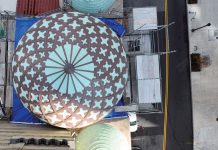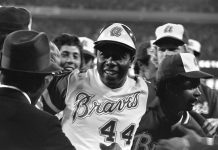Handy Johnson
West End resident since 1971. When Johnson and his wife were expecting a child, they bought a folk Victorian in 1976, where he still lives.
“I was one of the earlier pioneers. I saw a neighborhood that was struggling, but that had beautiful—and affordable—architecture. When the Mall [West End] was built, Sears dominated the shopping district. We had auto service, laundry, cleaners. It was an aging neighborhood going from mostly middle-class, lower-income whites to young blacks who were trying to get established in Atlanta. Most of us worked downtown, in city government, state government. A lot were teachers.” —As told to Josh Green
Jim Schneider
Bought in Castleberry Hill in 1984. Locals call him the unofficial neighborhood historian.
“I remember Herman Russell [the real estate mogul] let us use his building for neighborhood meetings. People used to ask, ‘Where the hell is Castleberry Hill?’ The neighborhood had been neglected because you almost couldn’t get here. You could get there from the south end at West End, but nobody cared. And Castleberry stayed as a workaday neighborhood. Starting in the 1890s, we had Jews, blacks, and elite whites in the same neighborhood with no distance. They weren’t literally next to each other, but they were damn close and the neighborhood worked.”
—As told to Gavin Godfrey
Sam Adams
Vinings resident since 1968. Adams and his young family moved to Vinings from the Bolton Road area, just across the Chattahoochee, where he grew up.
“Clark Baker, who I bought from, owned 300 some acres of dairy land here. When I moved here, he really wasn’t selling milk anymore, but he still had the barn and he had a lot of milking equipment. When I bought the property, North Elizabeth Lane was a dirt road, but very shortly after that they paved it. I was familiar with this area really all my life. I’ve restored a lot of old cars, and I used to drive ’em right out here on Woodland Brook when it was a dirt road between Atlanta Road and Paces Ferry. Mr. Baker was a real nice fellow. He was just a country farmer, but he decided to sell some of his land to friends and folks. He didn’t advertise that much when I bought here. Now there’s constantly somebody selling something. But we’ve had some very nice people move in.” —As told to Mary Logan Bikoff
Susan Wade
Inman Park resident since 1953. Wade inherited a bungalow her grandparents bought in 1917.
“When I was a kid, most of the people around had working class jobs. You had the railroads, you had Stoveworks, you had Montag paper plant. We had a glider out on the front porch, and summertime when it was super hot, because we didn’t have A/C, I’d sleep out there. Up until the late 1960s, we never even locked our front door. But then it started to get really bad, and you didn’t even go outside after dark. The whole neighborhood had fallen on hard times. People were moving out, and transient scamps were moving in. Then in the 1970s, some young people started buying these houses and fixing ’em up, and it slowly started changing. When I inherited this house in ’86, it was appraised for something like 42 grand. You can just imagine how decrepit these houses were.” —As told to Mary Logan Bikoff










![The North Carolina Museum of Natural Sciences’ newest exhibit is a [pre]historic first](https://cdn2.atlantamagazine.com/wp-content/uploads/sites/4/2024/04/DD-3-100x70.jpg)


